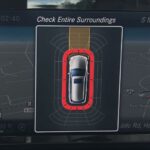The N55 engine, known for its performance, can sometimes experience issues with its valvetronic system. This article explores a case study involving a 2011 BMW 335i with the N55 engine, highlighting common problems and potential solutions related to valvetronic malfunctions. We’ll delve into symptoms such as misfires, cold start irregularities, and fault codes associated with the valvetronic system.
Symptoms and Diagnosis of N55 Valvetronic Problems
A 2011 BMW 335i with the N55 engine, equipped with an MPPK and MPE, began exhibiting issues after 88,000 miles. Initially, the car displayed a Check Engine Light (CEL) with codes 2DCE (Valvetronic – no adjustment possible) and 2EOF (Valvetronic – deactivated). The valvetronic servomotor and valve cover gasket were replaced. However, persistent cold start problems emerged. The engine would initially rev to 1200 RPM, drop to the normal 900 RPM after 30 seconds, then briefly dip to 500 RPM before recovering to 700 RPM. While warm starts and normal driving were unaffected, a subsequent 250-mile drive resulted in hesitation between 4-6k RPM under full throttle, followed by a CEL and rough engine operation.
New fault codes included:
- P0305 – Cylinder 5 Misfire
- 2EOF – Valvetronic Deactivated
- 2D43 – Valvetronic Adjustment Fault Range
- 2FAC – Combustion Miss, Spark Duration, Cylinder 5
- 2EFE – Misfire, Several Cylinders
- 2FO3 – Cylinder 5 Misfire Damaging Cats
- 2EEO – Fuel Injection Deactivation
Exploring Potential Causes and Solutions
The recurring 2EOF code suggests a persistent issue with the N55 Valvetronic system. While components like spark plugs, coil packs, and the oil pressure sensor were recently replaced, the valvetronic system remains a primary suspect. The initial valvetronic servomotor replacement might have addressed the initial fault codes, but the subsequent problems indicate a deeper issue. Possibilities include:
-
Faulty Valvetronic Actuator: Although the servomotor was replaced, the actuator itself could be malfunctioning, preventing proper valve lift adjustment.
-
Software or Programming Issues: The difficulty in reflashing the system during the initial repair suggests potential software-related problems. A corrupted software update or incompatibility could be disrupting valvetronic operation.
-
Wiring Harness or Connector Problems: Damaged wiring or loose connections within the valvetronic system could be causing intermittent communication issues, leading to the observed faults.
-
Mechanical Issues within the Valvetrain: Less likely but possible, issues within the valvetrain itself, such as worn eccentric shaft or damaged rocker arms, could be contributing to the problems.
Conclusion: Addressing N55 Valvetronic Challenges
Resolving N55 valvetronic issues requires a systematic approach to diagnosis. Given the recurring 2EOF code and the history of the vehicle, focusing on the valvetronic system is crucial. Thoroughly inspecting the wiring harness, connectors, and the valvetronic actuator for any damage or malfunction is recommended. Furthermore, ensuring the latest software updates are installed and properly configured is essential for optimal valvetronic performance. Addressing these potential causes can effectively resolve the misfires, cold start irregularities, and restore the vehicle’s performance and reliability.

